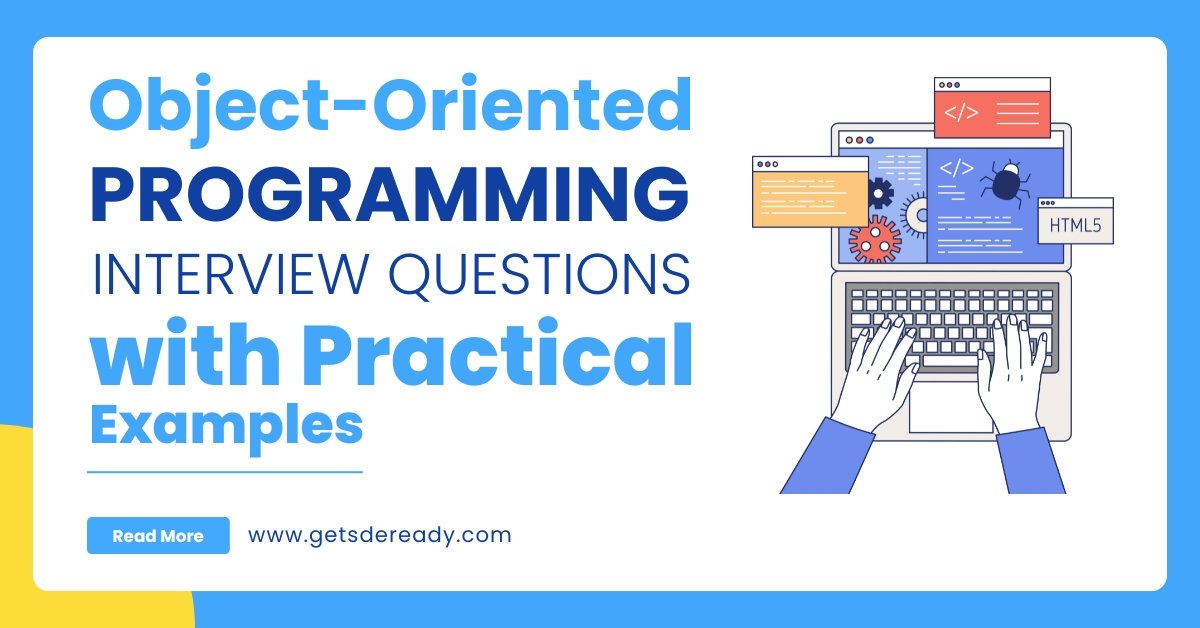Data Structures and Algorithms
- Introduction to Data Structures and Algorithms
- Time and Space Complexity Analysis
- Big-O, Big-Theta, and Big-Omega Notations
- Recursion and Backtracking
- Divide and Conquer Algorithm
- Dynamic Programming: Memoization vs. Tabulation
- Greedy Algorithms and Their Use Cases
- Understanding Arrays: Types and Operations
- Linear Search vs. Binary Search
- Sorting Algorithms: Bubble, Insertion, Selection, and Merge Sort
- QuickSort: Explanation and Implementation
- Heap Sort and Its Applications
- Counting Sort, Radix Sort, and Bucket Sort
- Hashing Techniques: Hash Tables and Collisions
- Open Addressing vs. Separate Chaining in Hashing
- DSA Questions for Beginners
- Advanced DSA Questions for Competitive Programming
- Top 10 DSA Questions to Crack Your Next Coding Test
- Top 50 DSA Questions Every Programmer Should Practice
- Top Atlassian DSA Interview Questions
- Top Amazon DSA Interview Questions
- Top Microsoft DSA Interview Questions
- Top Meta (Facebook) DSA Interview Questions
- Netflix DSA Interview Questions and Preparation Guide
- Top 20 DSA Interview Questions You Need to Know
- Top Uber DSA Interview Questions and Solutions
- Google DSA Interview Questions and How to Prepare
- Airbnb DSA Interview Questions and How to Solve Them
- Mobile App DSA Interview Questions and Solutions
DSA Interview Questions
- DSA Questions for Beginners
- Advanced DSA Questions for Competitive Programming
- Top 10 DSA Questions to Crack Your Next Coding Test
- Top 50 DSA Questions Every Programmer Should Practice
- Top Atlassian DSA Interview Questions
- Top Amazon DSA Interview Questions
- Top Microsoft DSA Interview Questions
- Top Meta (Facebook) DSA Interview Questions
- Netflix DSA Interview Questions and Preparation Guide
- Top 20 DSA Interview Questions You Need to Know
- Top Uber DSA Interview Questions and Solutions
- Google DSA Interview Questions and How to Prepare
- Airbnb DSA Interview Questions and How to Solve Them
- Mobile App DSA Interview Questions and Solutions
Data Structures and Algorithms
- Introduction to Data Structures and Algorithms
- Time and Space Complexity Analysis
- Big-O, Big-Theta, and Big-Omega Notations
- Recursion and Backtracking
- Divide and Conquer Algorithm
- Dynamic Programming: Memoization vs. Tabulation
- Greedy Algorithms and Their Use Cases
- Understanding Arrays: Types and Operations
- Linear Search vs. Binary Search
- Sorting Algorithms: Bubble, Insertion, Selection, and Merge Sort
- QuickSort: Explanation and Implementation
- Heap Sort and Its Applications
- Counting Sort, Radix Sort, and Bucket Sort
- Hashing Techniques: Hash Tables and Collisions
- Open Addressing vs. Separate Chaining in Hashing
- DSA Questions for Beginners
- Advanced DSA Questions for Competitive Programming
- Top 10 DSA Questions to Crack Your Next Coding Test
- Top 50 DSA Questions Every Programmer Should Practice
- Top Atlassian DSA Interview Questions
- Top Amazon DSA Interview Questions
- Top Microsoft DSA Interview Questions
- Top Meta (Facebook) DSA Interview Questions
- Netflix DSA Interview Questions and Preparation Guide
- Top 20 DSA Interview Questions You Need to Know
- Top Uber DSA Interview Questions and Solutions
- Google DSA Interview Questions and How to Prepare
- Airbnb DSA Interview Questions and How to Solve Them
- Mobile App DSA Interview Questions and Solutions
DSA Interview Questions
- DSA Questions for Beginners
- Advanced DSA Questions for Competitive Programming
- Top 10 DSA Questions to Crack Your Next Coding Test
- Top 50 DSA Questions Every Programmer Should Practice
- Top Atlassian DSA Interview Questions
- Top Amazon DSA Interview Questions
- Top Microsoft DSA Interview Questions
- Top Meta (Facebook) DSA Interview Questions
- Netflix DSA Interview Questions and Preparation Guide
- Top 20 DSA Interview Questions You Need to Know
- Top Uber DSA Interview Questions and Solutions
- Google DSA Interview Questions and How to Prepare
- Airbnb DSA Interview Questions and How to Solve Them
- Mobile App DSA Interview Questions and Solutions
Object-Oriented Programming Interview Questions with Practical Examples
Object-Oriented Programming (OOP) is a fundamental programming paradigm that organizes code around objects, which are instances of classes containing data (attributes) and behaviors (methods). It’s a critical topic for technical interviews, especially for roles in software development, system design, or programming. This comprehensive guide covers a wide range of OOP interview questions, from basic to advanced, with practical examples to help you prepare effectively. Whether you’re a beginner or an experienced developer, this post will provide in-depth knowledge to boost your confidence.
To enhance your programming skills and stay updated with the latest resources, sign up for our free course. Let’s dive into the world of OOP and get you ready to ace your next interview!
Introduction to Object-Oriented Programming
OOP is a programming paradigm that models real-world entities as objects, which combine data and the operations that manipulate that data. This approach promotes modularity, reusability, and maintainability, making it easier to manage complex software systems. OOP is widely used in languages like Java, Python, C++, and C#, and it’s a staple in technical interviews due to its importance in software design.
The four core principles of OOP are:
- Encapsulation: Bundling data and methods into a single unit (class) and restricting access to certain components.
- Abstraction: Hiding complex implementation details and exposing only the necessary functionality.
- Inheritance: Allowing one class to inherit properties and methods from another, promoting code reuse.
- Polymorphism: Enabling objects of different classes to be treated as instances of a common superclass, allowing flexible behavior.
Understanding these principles is crucial for answering OOP interview questions. This guide will cover both theoretical questions and practical examples to help you demonstrate your expertise. If you’re also interested in mastering related topics, check out our Data Structures and Algorithms course or Master DSA, Web Dev, and System Design course.
Basic OOP Interview Questions
These questions cover the foundational concepts of OOP, often asked in interviews for entry-level or junior developer roles.
1. What is Object-Oriented Programming (OOP)?
OOP is a programming paradigm that organizes code around objects, which are instances of classes. A class defines the attributes (data) and methods (functions) that objects can have, modeling real-world entities. OOP simplifies complex problems by breaking them into manageable, reusable components.
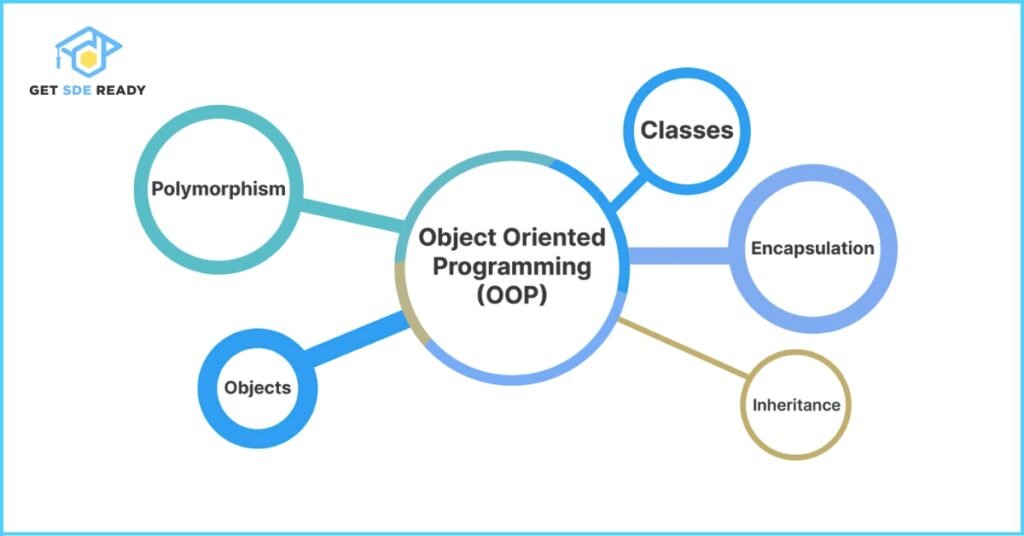
Example: In a library system, a Book class might have attributes like title and author, and methods like checkOut() and returnBook(). Each book in the library is an object of the Book class.
public class Book {
String title;
String author;
public Book(String title, String author) {
this.title = title;
this.author = author;
}
public void checkOut() {
System.out.println(title + " has been checked out.");
}
}
public class Main {
public static void main(String[] args) {
Book book = new Book("1984", "George Orwell");
book.checkOut(); // Output: 1984 has been checked out.
}
}
2. Why is OOP Used?
OOP is used because it offers several benefits:
- Code Reusability: Inheritance allows reusing code from existing classes.
- Modularity: Code is organized into independent objects, making it easier to manage.
- Maintainability: Encapsulation hides internal details, simplifying updates.
- Scalability: OOP supports building complex systems by combining simple objects.
Example: In a banking system, a BankAccount class can define common attributes like balance and methods like deposit(). Subclasses like SavingsAccount can inherit these and add specific features.
3. What are the Main Features of OOP?
The four pillars of OOP are:
- Encapsulation: Bundling data and methods, restricting access to protect data integrity.
- Abstraction: Hiding implementation details and exposing only necessary functionality.
- Inheritance: Allowing a class to inherit properties and methods from another class.
- Polymorphism: Enabling objects to be treated as instances of a common superclass with different behaviors.
Example: A Vehicle class might use abstraction to define a move() method, which is implemented differently by subclasses like Car and Bike.
4. What is a Class?
A class is a blueprint for creating objects. It defines the attributes and methods that objects will have but does not occupy memory itself.
Example:
public class Car {
String brand;
String model;
int year;
public Car(String brand, String model, int year) {
this.brand = brand;
this.model = model;
this.year = year;
}
public void displayInfo() {
System.out.println(year + " " + brand + " " + model);
}
}
5. What is an Object?
An object is an instance of a class, representing a specific entity with the attributes and behaviors defined by the class. Objects occupy memory and are created using the class as a template.
Example:
public class Main {
public static void main(String[] args) {
Car myCar = new Car("Toyota", "Camry", 2022);
myCar.displayInfo(); // Output: 2022 Toyota Camry
}
}
6. What is Encapsulation?
Encapsulation is the process of bundling data and methods into a class and restricting access to certain components using access specifiers (e.g., private, public). It protects data integrity by allowing access only through defined methods.
Example
public class Student {
private String name;
private int age;
public String getName() {
return name;
}
public void setName(String name) {
this.name = name;
}
public int getAge() {
return age;
}
public void setAge(int age) {
this.age = age;
}
}
public class Main {
public static void main(String[] args) {
Student s = new Student();
s.setName("John");
s.setAge(20);
System.out.println(s.getName() + " is " + s.getAge() + " years old");
}
}
7. What is Abstraction?
Abstraction hides complex implementation details and exposes only the necessary functionality to the user, simplifying interaction with objects.
Example:
abstract class Shape {
abstract void draw();
}
class Circle extends Shape {
@Override
void draw() {
System.out.println("Drawing a circle");
}
}
public class Main {
public static void main(String[] args) {
Shape s = new Circle();
s.draw(); // Output: Drawing a circle
}
}
8. What is Inheritance?
Inheritance allows a class (subclass) to inherit properties and methods from another class (superclass), promoting code reuse and establishing relationships between classes.
Example:
class Animal {
public void eat() {
System.out.println("I can eat");
}
}
class Dog extends Animal {
public void bark() {
System.out.println("I can bark");
}
}
public class Main {
public static void main(String[] args) {
Dog d = new Dog();
d.bark(); // Output: I can bark
d.eat(); // Output: I can eat
}
}
9. What is Polymorphism?
Polymorphism allows objects of different classes to be treated as instances of a common superclass, enabling flexible behavior through method overloading (compile-time) or overriding (runtime).
Example:
class Animal {
public void eat() {
System.out.println("I can eat");
}
}
class Dog extends Animal {
@Override
public void eat() {
System.out.println("I can eat bones");
}
}
public class Main {
public static void main(String[] args) {
Animal a = new Dog();
a.eat(); // Output: I can eat bones
}
}
10. What are Access Specifiers?
Access specifiers define the accessibility of classes, methods, and attributes. Common specifiers include:
- Public: Accessible from anywhere.
- Private: Accessible only within the same class.
- Protected: Accessible within the same class and its subclasses.
Example:
public class MyClass {
private int privateVar;
protected int protectedVar;
public int publicVar;
public void display() {
System.out.println(privateVar); // Accessible within the class
}
}
Advanced OOP Interview Questions
These questions dive deeper into OOP concepts, often asked in interviews for mid-level or senior developer roles.
1. What is Multiple Inheritance?
Multiple inheritance allows a class to inherit properties and behaviors from more than one parent class. It’s supported in languages like C++ but not in Java, which uses interfaces to achieve similar functionality.
Example (C++):
class A {
public:
void methodA() {
cout << "Method A" << endl;
}
};
class B {
public:
void methodB() {
cout << "Method B" << endl;
}
};
class C : public A, public B {
};
int main() {
C obj;
obj.methodA(); // Output: Method A
obj.methodB(); // Output: Method B
return 0;
}
2. What is the Difference Between Overloading and Overriding?
- Overloading: Defining multiple methods with the same name but different parameters in the same class, resolved at compile time.
- Overriding: Redefining a method in a subclass that is already defined in the superclass, resolved at runtime.
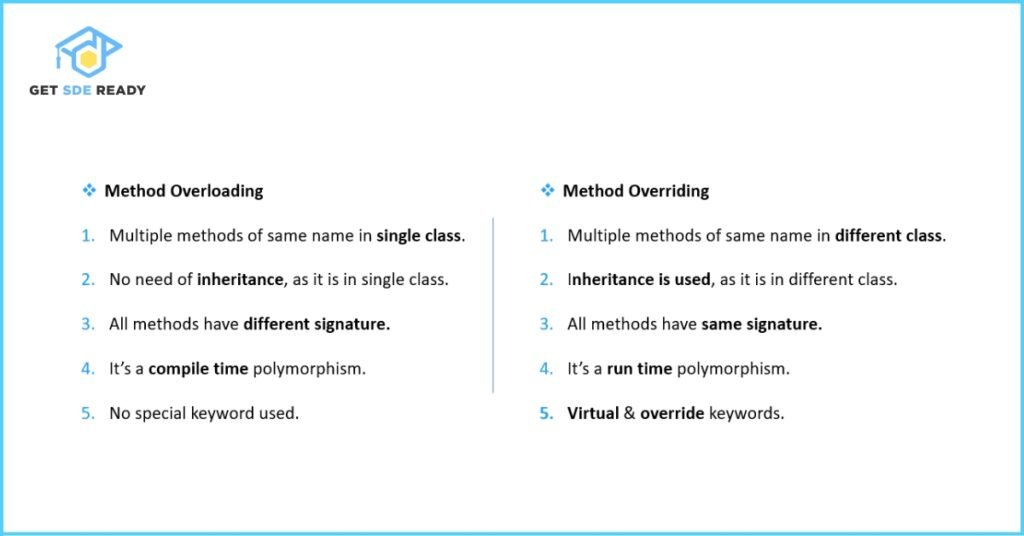
Example:
class Calculator {
public int add(int a, int b) {
return a + b;
}
public double add(double a, double b) {
return a + b;
}
}
class AdvancedCalculator extends Calculator {
@Override
public int add(int a, int b) {
return a + b + 1; // Overriding
}
}
3. What is a Constructor?
A constructor is a special method called automatically when an object is created, used to initialize the object’s state.
Example:
public class Car {
String brand;
String model;
public Car(String brand, String model) {
this.brand = brand;
this.model = model;
}
}
public class Main {
public static void main(String[] args) {
Car myCar = new Car("Toyota", "Camry");
}
}
4. What is an Abstract Class?
An abstract class cannot be instantiated and is designed to be inherited by subclasses. It may contain abstract methods (without implementation) that subclasses must implement.
Example:
abstract class Animal {
abstract void makeSound();
}
class Dog extends Animal {
@Override
void makeSound() {
System.out.println("Woof!");
}
}
5. What is an Interface?
An interface is a collection of abstract methods that classes can implement, defining a contract for behavior.
Example:
interface Shape {
void draw();
}
class Circle implements Shape {
@Override
public void draw() {
System.out.println("Drawing a circle");
}
}
6. What is the Difference Between an Abstract Class and an Interface?
- Abstract Class: Can have both abstract and concrete methods; supports single inheritance.
- Interface: Contains only abstract methods (until Java 8); supports multiple implementations.
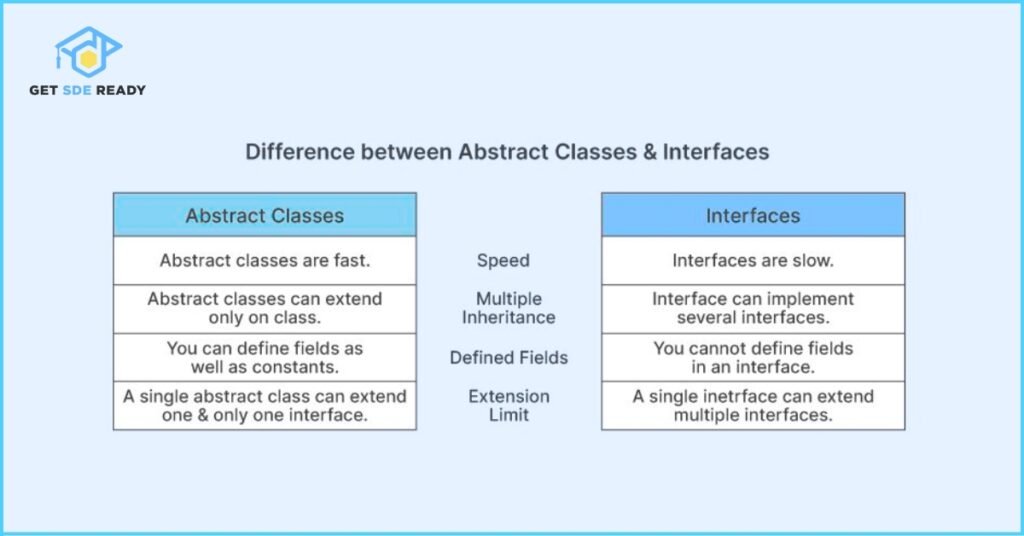
7. What is Compile-Time Polymorphism?
Compile-time polymorphism (static polymorphism) is achieved through method overloading, where the method to call is determined at compile time based on the method signature.
Example
class Calculator {
public int add(int a, int b) {
return a + b;
}
public double add(double a, double b) {
return a + b;
}
}
8. What is Run-Time Polymorphism?
Run-time polymorphism (dynamic polymorphism) is achieved through method overriding, where the method to call is determined at runtime based on the object’s actual type.
Example:
class Animal {
public void eat() {
System.out.println("I can eat");
}
}
class Dog extends Animal {
@Override
public void eat() {
System.out.println("I can eat bones");
}
}
public class Main {
public static void main(String[] args) {
Animal a = new Dog();
a.eat(); // Output: I can eat bones
}
}
9. Can We Call a Base Class Method Without Creating an Instance?
Yes, if the method is static, it can be called without creating an instance of the class.
Example:
class Base {
public static void staticMethod() {
System.out.println("Static method in Base class");
}
}
public class Main {
public static void main(String[] args) {
Base.staticMethod(); // Output: Static method in Base class
}
}
10. What is a Destructor?
A destructor is a special method called automatically when an object is destroyed, used to clean up resources. In Java, destructors are not explicitly defined; the garbage collector handles memory cleanup.
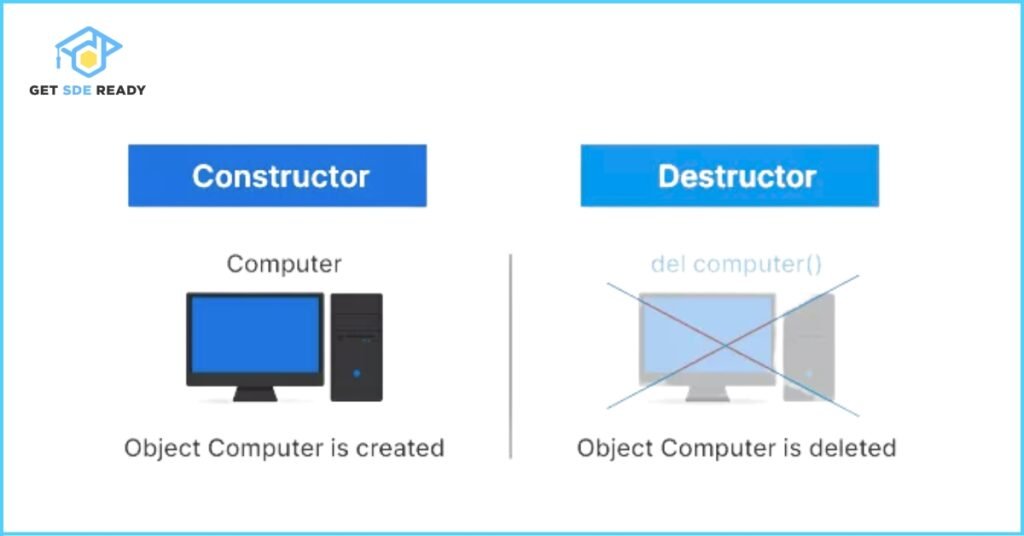
Example (C++):
class MyClass {
public:
~MyClass() {
cout << "Destructor called" << endl;
}
};
Practical Examples Table
Concept | Description | Example Code (Java) |
Class/Object | Blueprint and instance of a class | class Car { String brand; } Car myCar = new Car(); |
Encapsulation | Restricting access to data via private attributes | class Student { private String name; public String getName() { return name; } } |
Inheritance | Subclass inherits from superclass | class Dog extends Animal { void bark() { System.out.println(“Bark”); } } |
Polymorphism | Different implementations of a method | class Dog extends Animal { @Override void eat() { System.out.println(“Bones”); } } |
Abstraction | Hiding implementation details | abstract class Shape { abstract void draw(); } class Circle extends Shape { … } |
Additional Resources
To deepen your understanding of OOP and related topics, explore these resources:
- Data Structures and Algorithms Course: Learn how OOP integrates with data structures.
- Web Development Course: Apply OOP in building web applications.
- Master DSA, Web Dev, and System Design: Comprehensive preparation for technical interviews.
- Data Science Course: Understand OOP in data science applications.
- Crash Course: Quick review of key programming concepts.
FAQs
What are the key concepts of Object-Oriented Programming?
The key concepts of OOP include classes, objects, inheritance, polymorphism, encapsulation, and abstraction.
How does inheritance work in OOP?
Inheritance allows a subclass to inherit properties and methods from a superclass, promoting code reuse and establishing relationships.
What is the difference between a class and an object in OOP?
A class is a blueprint defining attributes and methods, while an object is an instance of a class with specific data.
Why is encapsulation important in OOP?
Encapsulation protects data integrity by bundling data and methods and restricting access through defined interfaces.
Can you explain polymorphism with an example?
Polymorphism allows objects of different classes to be treated as instances of a common superclass. For example, a Shape class’s draw() method can be overridden by Circle to draw a circle.
Conclusion
Mastering OOP is essential for acing technical interviews and building robust software. By understanding the core principles and practicing with practical examples, you can confidently tackle any OOP-related question. Continue your learning journey with our free courses and explore advanced topics like system design to stand out in your interviews. Happy coding!
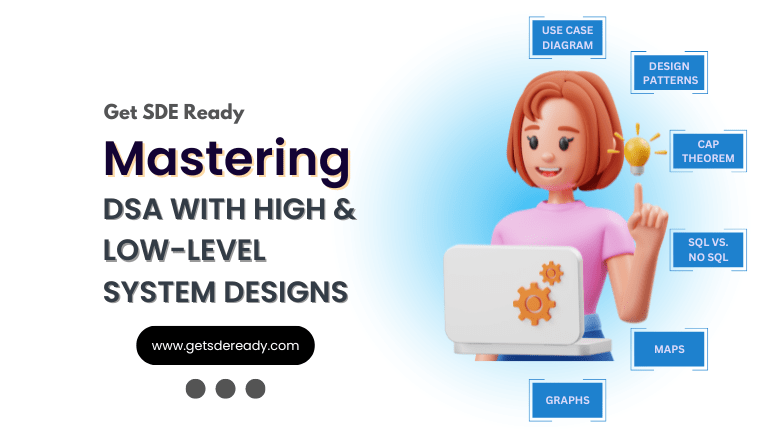
DSA, High & Low Level System Designs
- 85+ Live Classes & Recordings
- 24*7 Live Doubt Support
- 400+ DSA Practice Questions
- Comprehensive Notes
- HackerRank Tests & Quizzes
- Topic-wise Quizzes
- Case Studies
- Access to Global Peer Community
Buy for 60% OFF
₹25,000.00 ₹9,999.00
Accelerate your Path to a Product based Career
Boost your career or get hired at top product-based companies by joining our expertly crafted courses. Gain practical skills and real-world knowledge to help you succeed.
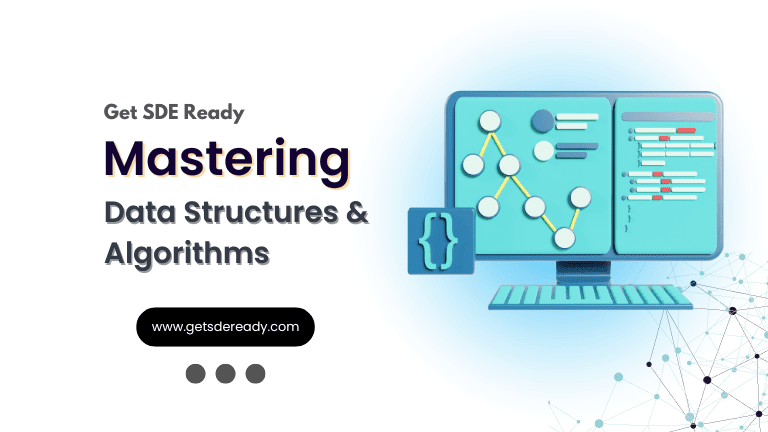
Mastering Data Structures & Algorithms
- 65+ Live Classes & Recordings
- 24*7 Live Doubt Support
- 400+ DSA Practice Questions
- Comprehensive Notes
- HackerRank Tests
- Access to Global Peer Community
- Topic-wise Quizzes
- Interview Prep Material
Buy for 50% OFF
₹9,999.00 ₹4,999.00
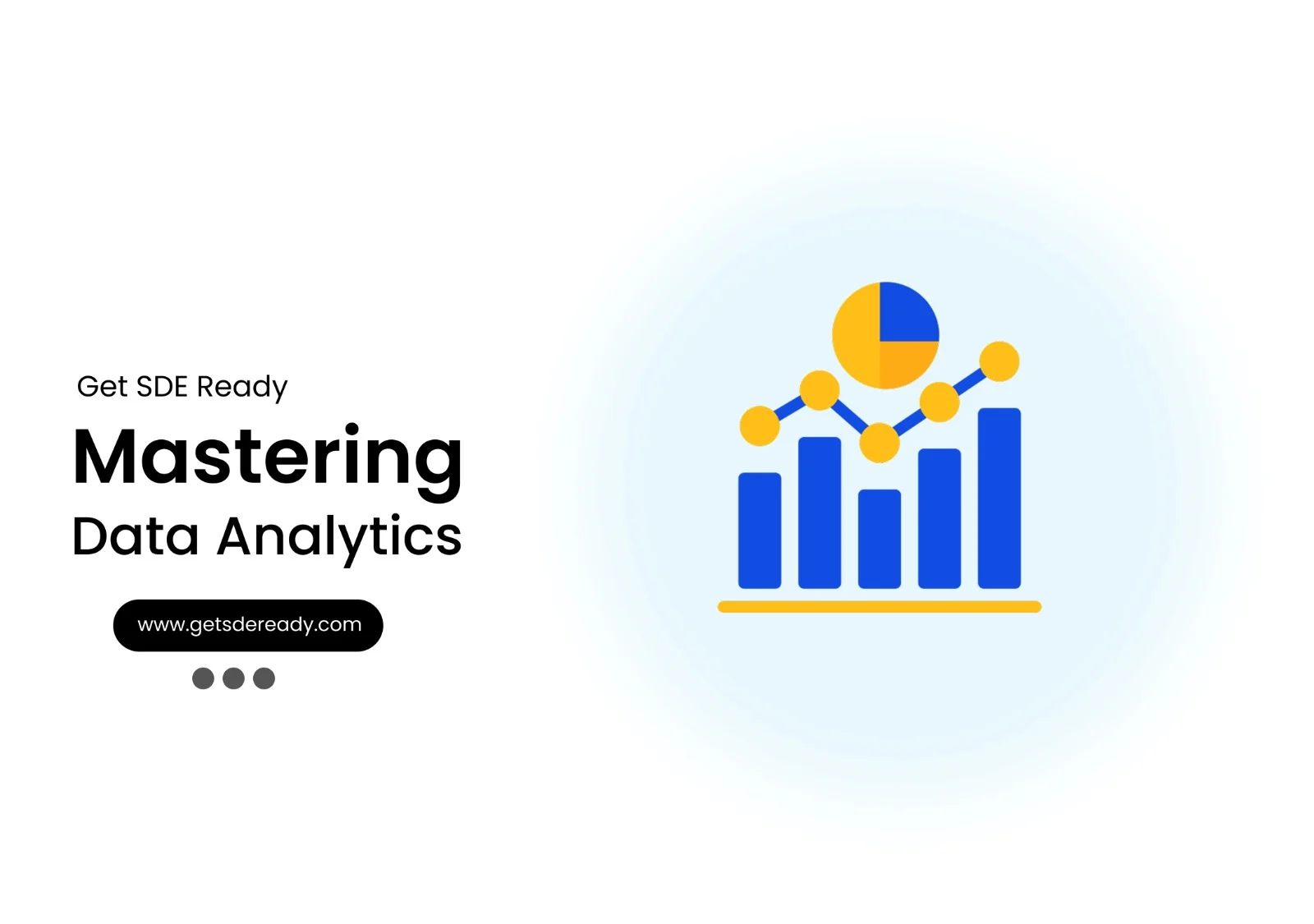
Data Analytics
- 20+ Live Classes & Recordings
- 24*7 Live Doubt Support
- 15+ Hands-on Live Projects
- Comprehensive Notes
- Real-world Tools & Technologies
- Access to Global Peer Community
- Interview Prep Material
- Placement Assistance
Buy for 70% OFF
₹9,999.00 ₹2,999.00

Low & High Level System Design
- 20+ Live Classes & Recordings
- 24*7 Live Doubt Support
- Case Studies
- Comprehensive Notes
- HackerRank Tests
- Topic-wise Quizzes
- Access to Global Peer Community
- Interview Prep Material
Buy for 65% OFF
₹20,000.00 ₹6,999.00
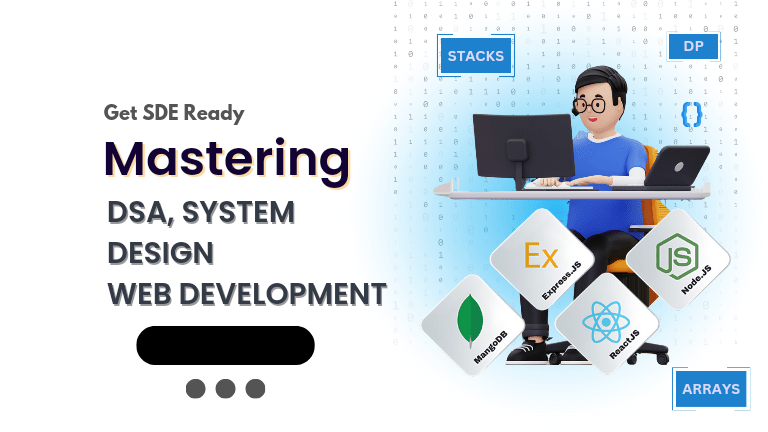
Fast-Track to Full Spectrum Software Engineering
- 120+ Live Classes & Recordings
- 24*7 Live Doubt Support
- 400+ DSA Practice Questions
- Comprehensive Notes
- HackerRank Tests & Quizzes
- 12+ live Projects & Deployments
- Case Studies
- Access to Global Peer Community
Buy for 57% OFF
₹35,000.00 ₹14,999.00

DSA, High & Low Level System Designs
- 85+ Live Classes & Recordings
- 24*7 Live Doubt Support
- 400+ DSA Practice Questions
- Comprehensive Notes
- HackerRank Tests & Quizzes
- Topic-wise Quizzes
- Case Studies
- Access to Global Peer Community
Buy for 60% OFF
₹25,000.00 ₹9,999.00
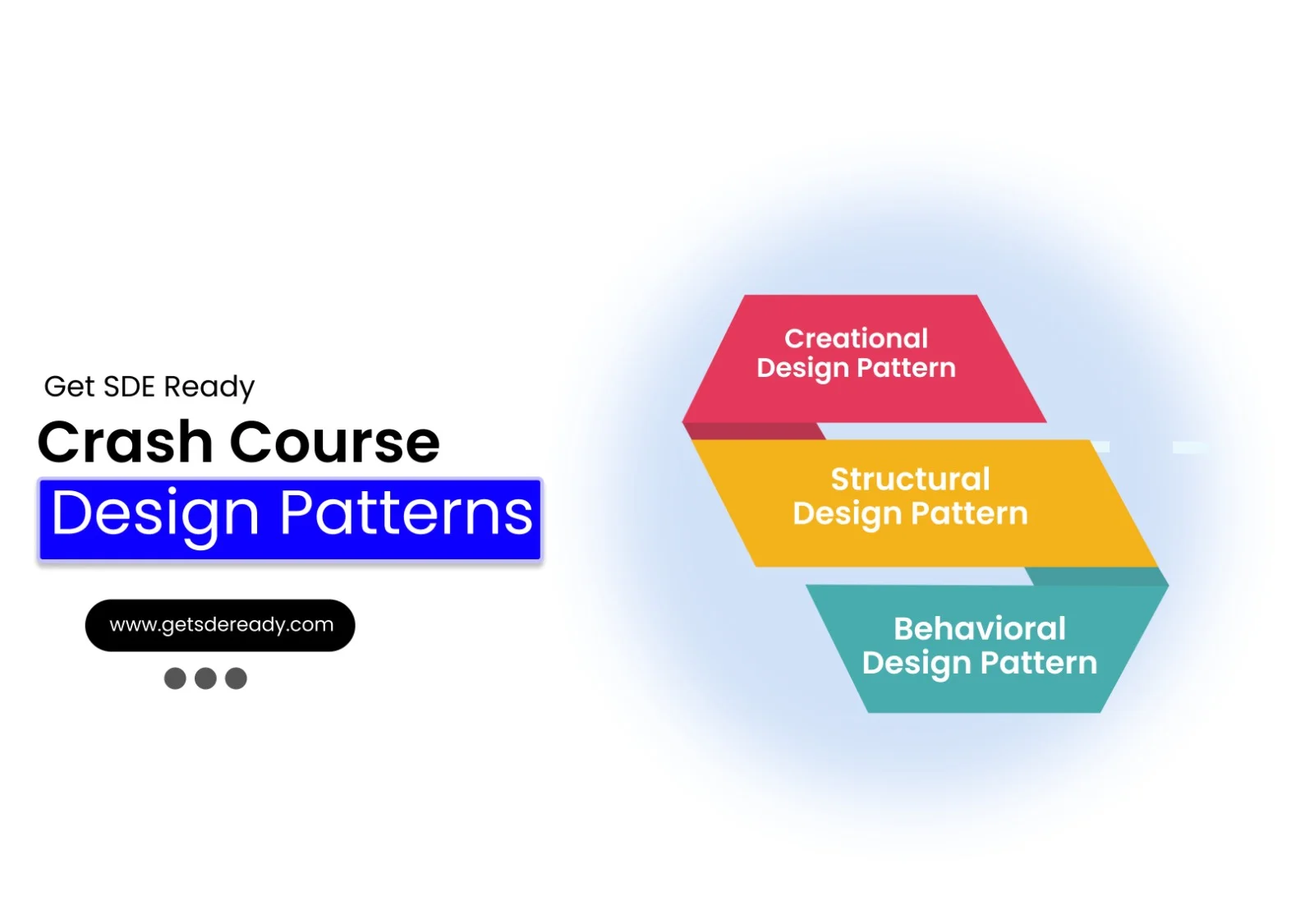
Design Patterns Bootcamp
- Live Classes & Recordings
- 24/7 Live Doubt Support
- Practice Questions
- Case Studies
- Access to Global Peer Community
- Topic wise Quizzes
- Referrals
- Certificate of Completion
Buy for 50% OFF
₹2,000.00 ₹999.00
Reach Out Now
If you have any queries, please fill out this form. We will surely reach out to you.
Contact Email
Reach us at the following email address.
arun@getsdeready.com
Phone Number
You can reach us by phone as well.
+91-97737 28034
Our Location
Rohini, Sector-3, Delhi-110085
